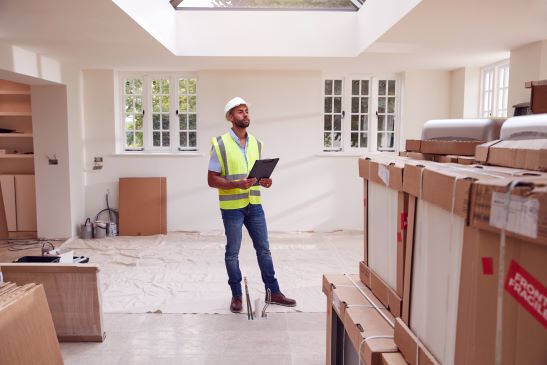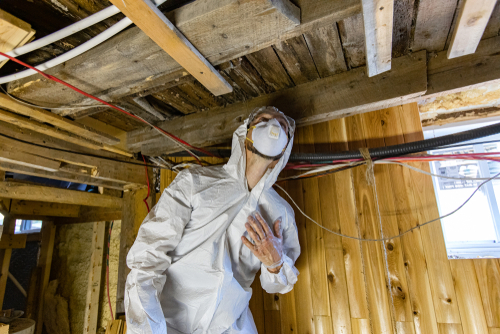As a building or pest inspector, a significant portion of your work may be from customers who are looking to buy a property. Your pre-purchase building inspection or pest inspection could be the deciding factor that helps them decide to buy or not to buy. That’s the big reason why it’s so important to let them know about any limitations that affect your inspection and give them recommendations that may inform their buying decision.
In your line of work, encountering obstructions during a pre-purchase building and pest inspection is not uncommon. If you can’t fully inspect a particular area of the property because of fixtures, fittings, overgrown plants, stored boxes etc, make sure you photograph and document these obstructions and let your customer know as part of your report.
In this article Rapid Solutions shares some common pre-purchase building and pest inspection obstructions, limitations and risks you might experience. We also share why it’s so important to properly document these limitations and communicate them to your customer. Find out what these steps are and how to deal with them to safeguard your business from potential claims.
Avoiding claims after pre-purchase building and/or pest inspection
Your business’ success is built on growing your reputation and getting new and repeat jobs. But that’s not all. It’s also built by protecting that reputation and revenue stream by avoiding claims (or liability). One of the biggest risks of a customer finding fault with your pre-purchase building or pest inspection is that they could lodge a claim against your business.
Imagine the impact on them and your business if they’ve gone ahead and bought a property then discovered damage that they believe wasn’t picked up in your inspection.
This could happen, even if you’ve done your due diligence and carried out your pre-purchase building and pest inspection properly. However, if you’ve documented and clearly communicated the limitations and risks to your customer timeously, along with recommendations to overcome these barriers, then you’re in a stronger position to prove you’re not liable. This could save you from paying your customer’s losses and legal bills, and help keep your business’s reputation intact.

Where are the biggest pre-purchase building and pest inspection risks?
Rapid Solutions CEO Belinda Smith is familiar with limitations you might experience during a pre-purchase building and pest inspection. She’s also familiar with common claims that pest and building inspectors experience when clients find building defects or termite damage that wasn’t identified in a pre-purchase inspection report.
“Limitations to pre-purchase building and pest inspection are typically in the roof space and subfloor but could also be areas obstructed by shelving, furniture, furnishings such as curtains as well as vegetation.”
– Rapid Solutions CEO, Belinda Smith
Belinda shares some important steps to help prevent your business from being liable in the case of a claim that results from limitations.
Here are her three top tips:
#1 Specific reporting beats generic reporting
Compliant reporting can be done in several ways, including using a reporting app for on-the-go reporting (read our article on rapid, compliant reporting with tips from an expert). But even though reporting systems can be efficient and effective tools for inspecting and reporting, don’t fall into the trap of relying on standard wordings and warnings.
Reporting templates are only a guideline; you need to add whatever is important to your unique inspection situation. Ultimately, you and your business are responsible for the quality of the pre-purchase building or pest inspection you do.
Importantly, areas with obstructions or that are inaccessible for another reason should be mentioned specifically, photographed and recommendations need to be made to remove or address the limitation. Don’t rely on standard clauses about limitations and obstructions in general. In your line of work every job is different and your reporting template might not cover certain limitations you encounter. That’s why you should always tailor your report to the individual inspection circumstances.
#2 Take enough photographs
Further on taking photos, know that these are vital for communicating (and having a record of) pre-purchase building and pest inspection limitations. Belinda says “photos included in reports should be labelled. Any recommendations to clear away, remove and/or address obstructions and limitations should be clear. In addition, they should also be time based, as in whether it’s urgent or not, and risk based, as in why it’s important to reassess the site after the limitation is removed.”
She provides a hypothetical example: “Access to the subfloor was obstructed by stored items and building materials. This prevented a full inspection for termite workings or activity, and any major defects or safety hazards. This is a high risk area for defects and should be cleared and reinspected prior to making a purchase decision. You might not include all the photographs in the report. But those you took might come in handy later if there’s a claim and you need to prove the condition of the site at the time of your inspection.” Speaking of which, read five of our building inspection tips to avoid claims against your business.
#3 Not all obstructions are limitations
Belinda also points out that not every obstruction you encounter during a pre-purchase building or pest inspection is necessarily a limitation. For example, make sure to properly inspect items you can move or look behind. For example, you should explore behind curtains, look inside sliding door cavities and lift insulation or carpet corners (where possible, without doing damage). This can result in a more complete inspection, particularly in these high risk areas.

You owe a duty of care to uphold the Australian Standards
Australian Consumer Law gives specific rights and protections to consumers who are buying your inspection service from you. After all, your service is the prelude to them deciding whether or not to buy a property. This means there are large sums of money, time and investment at stake.
“Where your customer feels you haven’t done a proper or thorough inspection, they will look to get a second opinion from another inspector. If that inspector’s opinion is that you weren’t thorough in your inspection, that you didn’t adequately inspect all available areas, you might find yourself with a claim against you. So consider how your report and its limitations might hold up under the microscope of another inspector retracing your steps!”
– Rapid Solutions CEO, Belinda Smith
The Australian Standards outline some of these areas and set out requirements for reporting on them. Read about the Australian Standards in our article on how to start your own building and pest inspection career. Also read our case study of insurance claims to see what your business could face otherwise.

You owe it to yourself to protect your business
While it’s no doubt crucial to avoid customer claims against pre-purchase building inspection work you’ve done, it’s not always possible. You may have done the work correctly, but a claim can still end up becoming a legal dispute. It’s a good idea to sign up your business for general liability insurance and professional indemnity insurance to help cover you for situations like this and a wide range of other risks.
Good insurance cover gives your business financial protection if a customer accuses you of negligence. It also helps protect your business financially for accidental damage, whether that’s to your customer or their property as a result of your work. That’s not all, because some business dangers can come from within. If your employee steals from your business, is rude to a customer or even commits fraud – your business could suffer. Thankfully your insurance helps protect you against financial loss in these and other circumstances.
Make sure to protect your business – don’t wait until it’s too late. Contact us online or call us on 1300 309 169 to start your quote.

